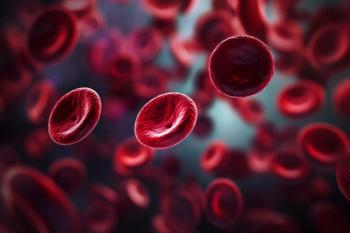
Adult Stem Cells Show Potential for Treating GVHD
The administration of adult stem cells increased survival in patients with both acute and chronic graft-versus-host disease in a compassionate use program.
Administering mesenchymal stromal cells, or adult stem cells, can be safe and effective for treating patients who experience steroid-resistant graft-versus-host disease after receiving a bone marrow transplant, according to a study
Bone marrow transplant, sometimes referred to as hematopoietic cell transplantation, is used as part of the treatment of certain cancers, including leukemia, myeloma, lymphoma, and other blood and immune system diseases.
Mesenchymal stromal cells (MSCs) are adult stem cells isolated from various sources within the body that can differentiate into other types of cells. They can be isolated from bone marrow, fat, umbilical cord tissue or amniotic fluid. They can differentiate into bone cells, cartilage, muscle cells, and neural cells.
In this study, investigators reviewed the outcomes of patients who had received mesenchymal stromal cells to treat steroid-resistant graft-versus-host disease through a compassionate use program at the Andalusian Health Care System in Andalusia, Spain. The program began in 2008.
Investigators, led by María del Mar Macías-Sánchez at the University of Malaga in Spain, reviewed the outcomes of 62 patients, 45 men (seven children) and 17 women (two children), who received the treatment after allogenic hematopoietic cell transplantation.
The overall response was achieved in 58.7% of patients with acute GVHD. Two years’ survival for acute GVHD responders was 51.85%. The overall response for patients with chronic GVHD was 62.5% and the two-year survival rate for responders was 70%.
In patients with acute GVHD, the median survival time was 608 days in the responder group compared with 25 days in the nonresponder group. In patients with chronic GVHD, the median survival time in the responder group was 1,039 days and 127 days in the nonresponder group.
The number of previous immune suppression treatments did not influence the clinical response, investigators found, and they did not find any association among the clinical response and other therapies, demographic or laboratory parameters.
In these patients, investigators found that in those with acute GVHD who achieved a clinical response, the time interval to infusion was longer than in non-responders. Investigators considered whether supportive therapy could have been a factor for those who responded to the stem cells but they could not rule out a synergistic effect in some cases.
The age at the time of hematopoietic cell transplantation was the only predictor found to be inversely correlated with survival in acute GVHD.
In terms of safety, the infusions of the stem cells were well tolerated. One patient experienced cardiac arrest but recovered; one patient lost consciousness but recovered. There was one case of thoracic pain and one case of pain at the infusion site. No other adverse events occurred. Among the children assessed, none experienced adverse events.
Half of the patients experienced infections, but they were not related to the stem cell infusions.
One major limitation of this study was that because this was a review of case studies, there was no control group. “Nevertheless, it can be viewed as a more realistic scenario to assess the therapeutic effect without the constraints of stringent inclusion and exclusion criteria in clinical trials,” investigators wrote.
Newsletter
Get the latest industry news, event updates, and more from Managed healthcare Executive.


















































